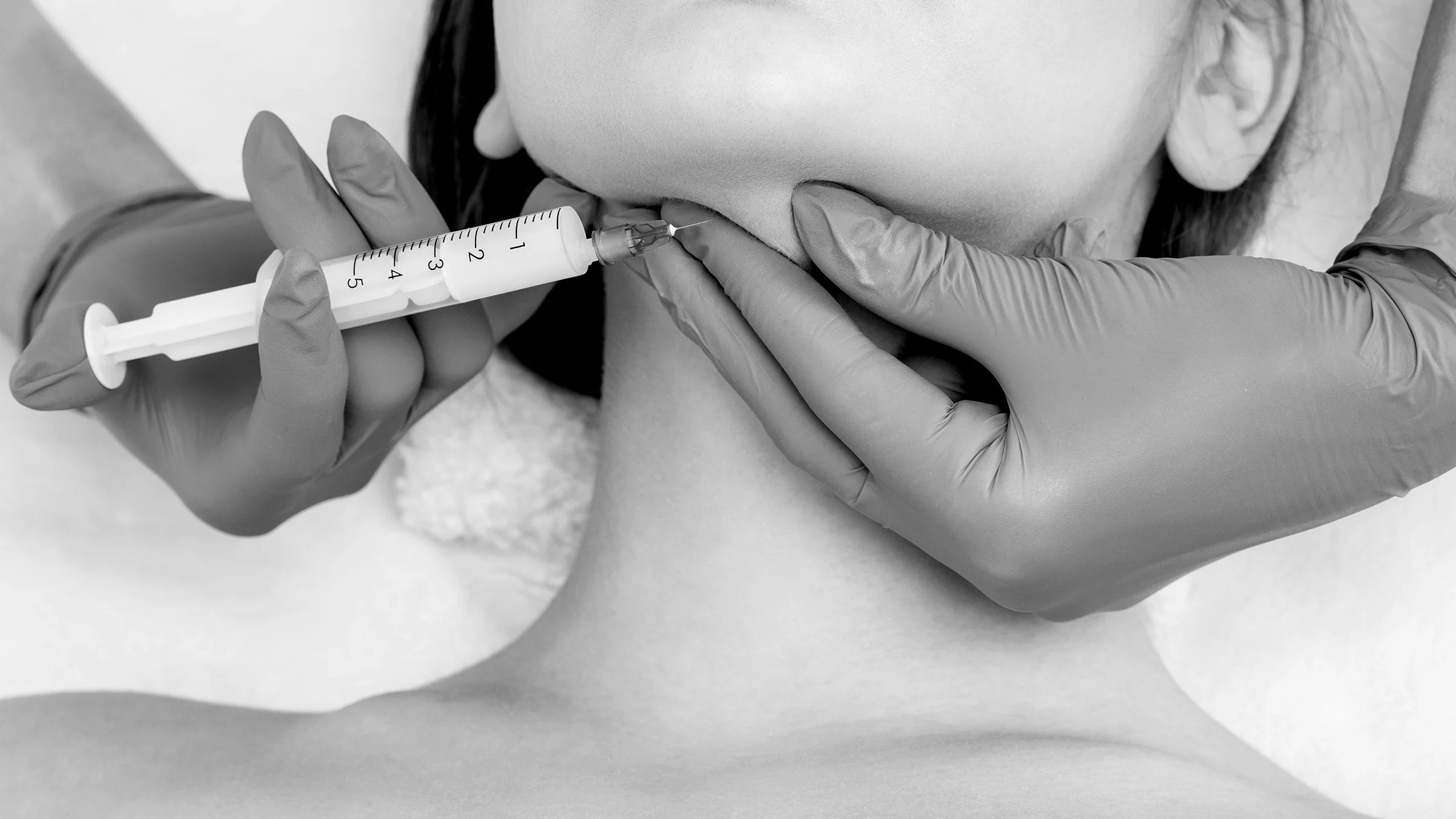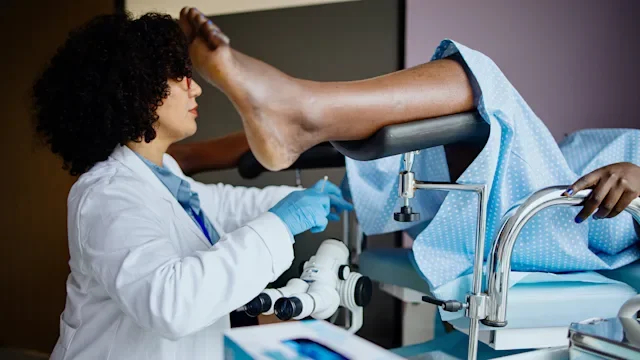Key takeaways:
A double chin, or submental fullness, can be caused by weight change, aging, or even genetics.
Double chin surgery refers to surgical and nonsurgical procedures that can remove excess fat from under the chin and create a smoother, more sculpted jawline.
Double chin surgeries can cost thousands of dollars and typically are not covered by health insurance.
Save on related medications
A lump or sag under the jaw is commonly known as a double chin. Medically, excess fat under the chin is known as submental fullness. A double chin can be caused by genetics, weight change, or aging.
A recent survey by the American Society for Dermatologic Surgery found that excess fat under the chin or neck was the second-most-common issue that “bothered” U.S. consumers seeking cosmetic surgery. For some people, a double chin can contribute to a negative self-perception or affect mental well-being.
Double chin surgery can remove extra fat and smooth out the skin, leaving you with a more structured profile. There are also non-surgical techniques to reduce fat and tighten skin under your chin. These options include:
Kybella injections
Cryolipolysis, fat freezing commonly known as CoolSculpting
Search and compare options
We’ll walk through these procedures below and go over how much they cost.
What causes a double chin?
A double chin can happen for a number of reasons. Gaining weight can cause a double chin, but you don’t need extra weight to develop the condition. Genetics or lifestyle factors also can create a double chin. Other reasons include aging and underlying medical conditions.
What are the types of double chin surgery?
Double chin surgery is an umbrella term that describes procedures that include incisions and others that do not.
A submentoplasty is a surgical procedure involving a small incision that removes excess fat under the chin and tightens the skin.
There are several neck lift surgeries that can address a double chin along with other areas. A cervicoplasty removes excess skin on the neck, while a platysmaplasty tightens loose neck muscles. You may have one or both of these procedures at one time.
A facelift also may be an option to treat a double chin. This procedure removes fat as well as loose, saggy skin around the chin and neck.
Read more like this
Explore these related articles, suggested for readers like you.
There are other nonsurgical options that we will discuss below.
How much does double chin surgery cost?
The price of double chin surgery depends on the procedure.
Total costs for cosmetic surgery performed on your chin and neck can range from $1,200 to $12,000, according to the American Board of Cosmetic Surgery. The average cost of a neck lift is $5,774 according to a 2020 report issued by the American Society of Plastic Surgeons. That price does not include related expenses such as anesthesia and operating facilities.
Other potential costs include:
Medical tests
Prescriptions
Follow-up care
Factors such as the surgeon’s experience can also influence what you pay. The price of your procedure depends on the venue, too. Surgeries may be scheduled in surgical centers or hospitals while alternative procedures can happen in doctor’s offices and medical spas.
Does insurance cover double chin surgery?
Your double chin surgery will most likely be a completely out-of-pocket expense. That’s because double chin surgery is almost always cosmetic. Health insurance companies do not typically cover cosmetic surgery, which is usually done to improve appearance and not to address a medical issue. In addition, the IRS doesn’t allow you to include cosmetic surgery among medical expense deductions on your taxes.
However, healthcare credit companies often allow you to finance cosmetic surgery expenses. Also, some surgeons and practices offer payment plans.
What are the benefits of double chin surgery?
According to American Society for Dermatologic Surgery, consumers exploring cosmetic surgery report doing so to:
Feel more confident
Appear more attractive
Look younger
Double chin surgery can:
Help you achieve a more contoured and defined chin and neck
Make your skin appear smoother
Make you look younger
Make you appear more slender
Help you feel more confident about the way you look
What are the risks of double chin surgery?
All surgeries have risks. If you have double chin surgery, it's possible that you may not be satisfied with the results. Your chin or face may appear uneven. Scarring or discoloration of the skin is possible, too. You also may have medical complications such as:
Infection
Excessive bleeding
Damage to blood vessels, nerves, or muscles
Pain
Swelling
What are the best alternatives to double chin surgery?
Other ways to treat a double chin without having surgery include the prescription injection called Kybella and chin liposuction.
Kybella
Kybella is a synthetic type of deoxycholic acid, a substance naturally found in the gallbladder that dissolves fat in our bodies. The FDA approved Kybella in 2015 to improve the appearance of submental fat (double chin) in adults. Over time, the medication breaks down fatty tissue so it can be naturally absorbed into the body. The results are considered permanent.
During each treatment, a medical professional will apply multiple small injections of Kybella under your chin. You will have two to six treatment sessions. The maximum number of treatments allowed is six. Typically, treatments are 4 to 6 weeks apart. The manufacturer reports that 59% of people in clinical studies required six treatments.
Each treatment typically requires one syringe of Kybella, but may require two or more. Your cost per session depends on your individual circumstances.
Like double chin surgery, Kybella can be costly. One Colorado clinic reports charging $599 for each Kybella syringe, but there are likely additional costs for anesthesia and administration of the injections. A Massachusetts practice reports $1,000 to $2,400 per treatment. A New York City cosmetic dermatologist reports each treatment is $1,200 to $1,800.
Chin liposuction and other options
Chin liposuction, also called submental liposuction, is a procedure that draws out fat deposits from underneath the skin.
Another alternative is cryolipolysis or fat freezing, commonly known as CoolSculpting.
Some surgeons use multiple techniques to address a double chin, such as CoolSculpting followed by Kybella.
Can double chin surgery be combined with a neck lift or face lift?
Sometimes, sculpting the chin requires more than surgery or a procedure restricted to that area. Surgeons often also use a neck lift or facelift to address a double chin. According to the American Board of Cosmetic Surgery, combining procedures can help create the desired result.
The bottom line
Weight change, aging, genetics, and medical conditions can cause a double chin. If you want to remove the fat under your chin, you have options. In addition to different types of surgery, there are nonsurgical alternatives that avoid incisions, such as Kybella or Coolsculpting. Sometimes, your surgeon will use multiple techniques to achieve the result you want.
Since procedures to address a double chin are almost always considered cosmetic, be prepared to pay out of pocket. Health insurance typically does not cover cosmetic procedures.

Why trust our experts?


References
American Board of Cosmetic Surgery. (n.d.). Neck contouring guide.
American Society for Dermatologic Surgery. (n.d.). What is injectable deoxycholic acid?
American Society for Dermatologic Surgery. (2019). 2019 ASDS consumer survey on cosmetic dermatologic procedures.
American Society of Plastic Surgeons. (n.d.). Cryolipolysis.
American Society of Plastic Surgeons. (n.d.). Liposuction.
American Society of Plastic Surgeons. (n.d.). Neck lift: How much does a neck lift cost?
American Society of Plastic Surgeons. (n.d.). Neck lift: What are the risks of neck lift surgery?
American Society of Plastic Surgeons. (n.d.). Neck lift: What is a neck lift?
AOB Med Spa. (2022). What is the cost of Kybella?
Internal Revenue Service. (2022). Publication 502 (2021), medical and dental expenses.
Ishii, L. (n.d.). Double chin surgery: What you need to know. Johns Hopkins Medicine.
Jalian, H.R., et al. (2022). Submental fat reduction using sequential treatment approach with cryolipolysis and ATX-101. Journal of Cosmetic Dermatology.
Johns Hopkins Medicine. (n.d.). Liposuction.
Keyhan, S.O. (2021). Platysmaplasty. Integrated Procedures in Facial Cosmetic Surgery.
Keyhan, S.O. (2021). Submental liposuction. Integrated Procedures in Facial Cosmetic Surgery.
Keyhan, S.O. (2021). Submentoplasty. Integrated Procedures in Facial Cosmetic Surgery.
Krauss Dermatology. (2019). How much does Kybella cost?
michelegreenmd.com. (2022). What is the cost of Kybella?
MyKybella.com. (n.d). About Kybella.
MyKybella.com. (n.d). Frequently asked questions: How many treatments will I need.
Teller, C.F., et al. (2021). Best clinical practices with ATX-101 for submental fat reduction: Patient-related factors and physician considerations. Plastic and Reconstructive Surgery—Global Open.


















